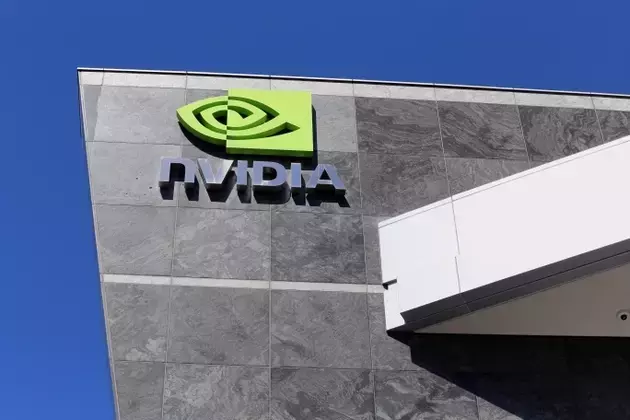
Nvidia, a pivotal player in the artificial intelligence sector, recently unveiled its third-quarter financial outcomes, which surpassed analyst projections, yet the market's reception was unexpectedly subdued. This phenomenon, where strong performance meets lukewarm investor response, underscores a complex interplay of high expectations and underlying market anxieties. Despite delivering impressive results, the company's valuation has seen a retraction, prompting questions about investor sentiment and the future trajectory of AI-driven stocks. This article delves into Nvidia's current standing, its strategic advantages, and the broader market dynamics influencing its stock performance, offering insights into whether the recent dip represents a fleeting concern or a strategic entry point for astute investors.
Nvidia's robust ecosystem, encompassing advanced networking solutions and sophisticated software platforms, grants it a formidable competitive moat in the rapidly evolving AI landscape. This integrated approach allows Nvidia to offer comprehensive, end-to-end solutions, making it an indispensable partner for companies building out their AI capabilities. As the global expenditure on AI infrastructure is forecast to surge to an astonishing $3-4 trillion by 2030, Nvidia is strategically positioned to capture a significant share of this growth, potentially boosting its free cash flow margins to nearly 50% by fiscal year 2028. The current market downturn, viewed by some as irrational and driven by unfounded fears of an "AI bubble," may actually present a compelling opportunity for long-term investors to acquire Nvidia shares at a more attractive valuation, echoing previous periods where similar dips proved to be lucrative accumulation zones.
Nvidia's Unyielding Dominance in AI Infrastructure and Ecosystem Growth
Nvidia's financial performance in the third quarter significantly exceeded market expectations, reinforcing its leading position as the primary beneficiary of the ongoing AI infrastructure boom. Despite these stellar results and an upward revision of future guidance, investor reaction was notably cautious, indicating a market perhaps demanding even more aggressive growth or expressing apprehension regarding broader economic factors. Nvidia's strategic advantage lies not only in its high-performance GPUs but also in its comprehensive ecosystem, which integrates cutting-edge networking technologies and expansive software platforms. This holistic approach creates a powerful synergy, enhancing the efficiency and capabilities of AI deployments and solidifying Nvidia's competitive edge against emerging challengers. This extensive ecosystem makes Nvidia an essential partner for companies navigating the complexities of AI development and deployment, distinguishing it from competitors who may offer only fragmented solutions. The company's continuous innovation in these areas ensures its hardware remains highly optimized for its software stack, providing an unparalleled user experience and performance that is difficult for rivals to replicate.
The projected expansion of the global AI infrastructure market to an estimated $3-4 trillion by 2030 underscores the immense opportunity ahead for Nvidia. This massive market growth is expected to drive substantial increases in Nvidia's revenue and profitability, with free cash flow margins potentially soaring to almost 50% by fiscal year 2028. This long-term outlook paints a picture of sustained financial strength and market leadership. The recent dip in Nvidia's stock valuation, despite strong fundamentals, has placed it back into what historical analysis identifies as "accumulation zones." These are price levels at which previous market corrections attracted significant dip-buying activity, leading to subsequent rebounds. For long-term investors, this current valuation presents a strategic entry point, suggesting that the market's present skepticism might be an overreaction fueled by speculative fears rather than a fundamental flaw in Nvidia's business model or growth prospects. The company's resilience, strategic foresight, and continued innovation in core AI technologies strongly support the thesis that its growth narrative is far from over, offering a compelling case for those looking beyond short-term market volatility.
Investor Sentiment and Valuation: Navigating AI Bubble Perceptions
Despite Nvidia's impressive operational and financial achievements, the market's response reveals underlying concerns that extend beyond the company's individual performance. The surprisingly muted reaction to Nvidia's strong third-quarter earnings and raised guidance indicates a market wrestling with broader issues, particularly the perceived risks associated with an "AI bubble." This skepticism, focusing on AI circular financing and elevated valuations, suggests investors are cautious about the sustainability of the current growth trajectory across the AI sector. While Nvidia's fundamentals remain robust and its ecosystem advantages are clear, the collective investor psyche appears to be influenced by the broader market narrative, leading to a disconnect between strong corporate results and stock price movements. This cautious sentiment highlights the challenges for even dominant companies in a high-growth, high-speculation sector, where market perceptions can temporarily overshadow intrinsic value.
The current valuation of Nvidia's stock, following a recent downturn, has brought it to levels historically seen as attractive accumulation points for investors. These periods have previously marked opportunities for "dip buyers" to enter or increase positions, capitalizing on temporary market anxieties. The critical question facing investors now is whether the current situation is merely a repeat of past patterns, where irrational fear temporarily depresses a fundamentally strong asset, or if this time is genuinely different due to new structural risks. For long-term investors, this presents a significant dilemma: should they succumb to the "AI bubble fears" or recognize the opportunity to invest in a company with a strong competitive moat and a clear path to future growth? Considering the projected massive expansion of the AI infrastructure market, coupled with Nvidia's established leadership and innovation, the argument leans towards viewing the current sell-off as an opportunity. It is a moment for investors to set aside short-term volatility and focus on Nvidia's enduring potential to benefit from the transformative power of artificial intelligence, aligning with a strategy that has historically rewarded patience and conviction in leading technological innovators.
